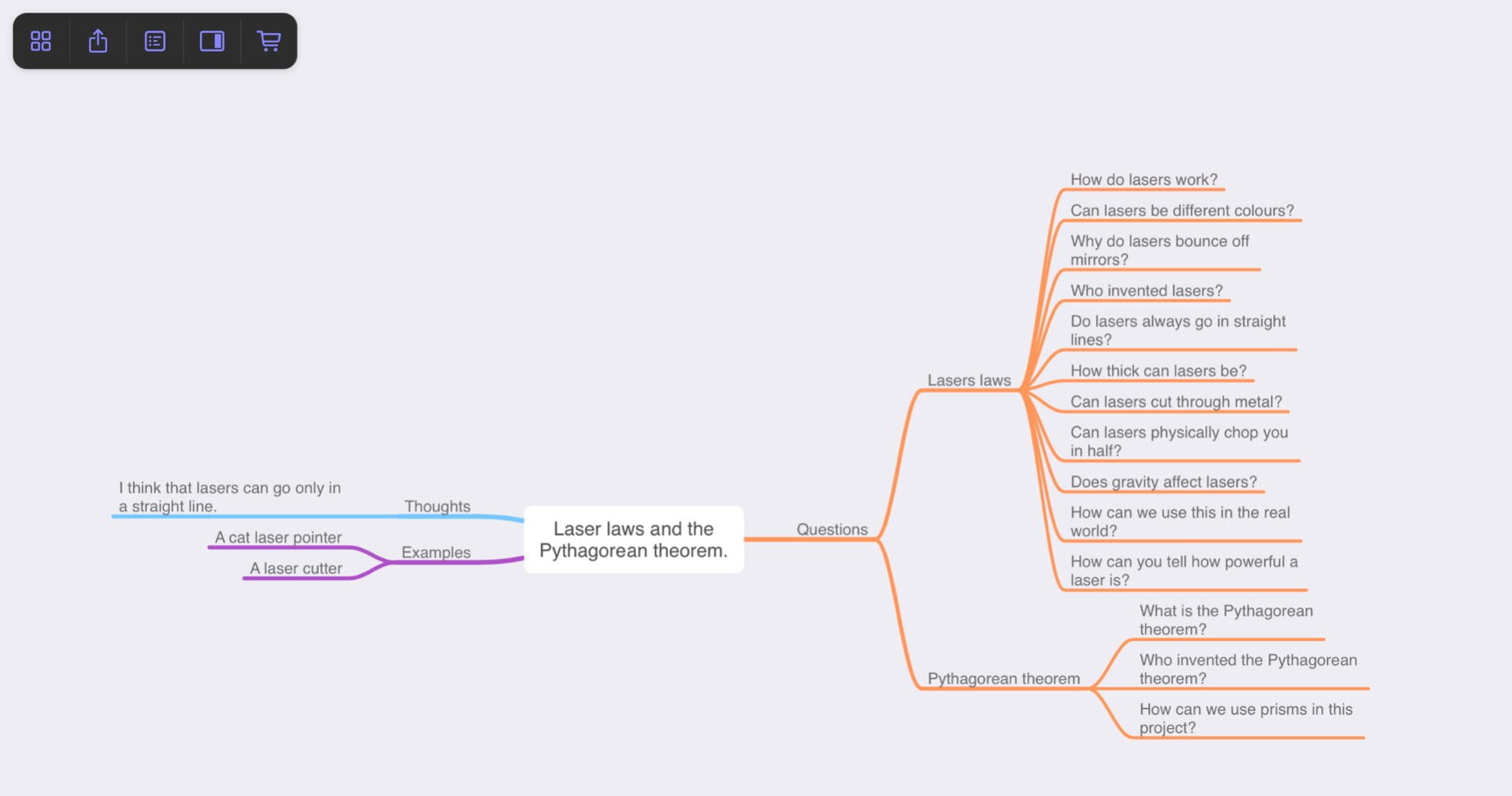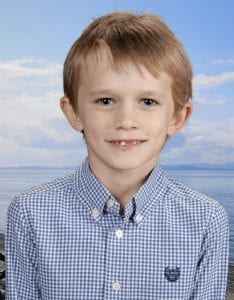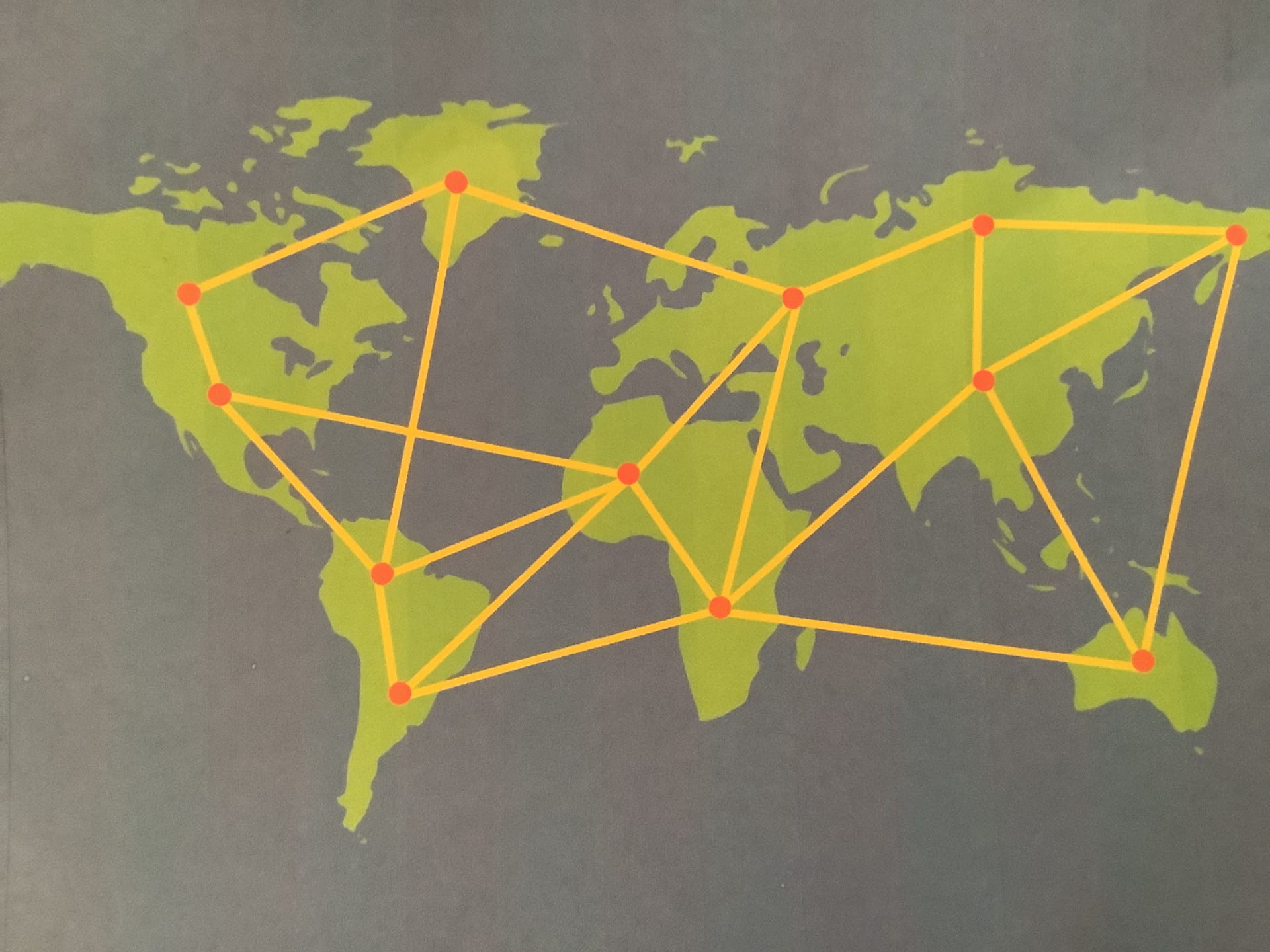Hey guys, welcome back or to my blog. In this project we made a laser display using the Pythagorean Theorem. The display had to include a triangle that was measured, how we proved the law of reflection, and how we proved the Pythagorean Theorem. We also did extra path that showed how accurate the measure app is. In my group I had Brooke, Jasper, and Andrew. 
At the start of this project we did a project start mind map. We listed questions we had about lasers and the Pythagorean Theorem. We put in thoughts, and we put in examples. As you can see, I didn’t know a lot about lasers, but I know a lot more after this project.

So there was the project start mind map, but there is also a project end mind map. What I do, is I go through and answer all of the questions that I had. This is what my mind map looked like after the project.

Milestones:
Milestone 1: Project start mind map, which is the first photo in this blog post.
Milestone 2: Law of reflection lab. In this milestone, we proved the law of reflection using a ray box. Here is my lab report. Lab Write-Up: Law of Reflection Experiment Purpose: Test the law of reflection to confirm it is true.
Question: How can we test the law of reflection to confirm that it is true, using a ray box, plane mirror, protractor, pencil and paper?
Hypothesis: Yes, I think that we can confirm the law of reflection using these materials.
Procedure:
• Plug in ray box
• Slide in the slitted square so that there is one slit showing
• Attach clips to plane mirror
• Set mirror up vertically on a table
• Place ray box on table, point at the mirror
• Put piece of paper under the mirror
• Trace the line of light with pencil
• Measure the angle with the protractor
• Record the measurements
• Repeat two more times using different angles by changing the angle of the light
Analyze Data:
1. Experiment #1: Angle of incidence = 50 Angle of reflection = 50
2. Experiment #1: Angle of incidence = 70 Angle of reflection = 70
3. Experiment #1: Angle of incidence = 10 Angle of reflection = 10
Conclusion: In this lab, we tested the law of reflection to see if it was true. First, we had to come up with a purpose, then turn that purpose into a question, then come up with a procedure, analyze data and finally, write this conclusion. We hit the ray box off of a mirror, and measured the angles, and it turned out that they were the same! So I concluded that the law of reflection is true. For an extra experiment I hit the light off of a concave mirror, and when the light came off of the mirror, it curved! From that I can prove that light sort of curves.
Milestone 4: No one did Milestone 3, so I’m gonna skip ahead to Milestone 4! We proved the law of reflection with a website. Here is my write up:
Milestone 4- Laser Triangle Lab
Question:
How can I test the Pythagorean theorem and the law of reflection?
Hypothesis:
I think that if I get the angles correct, I can make a right angle triangle.
Procedure:
- Go to the website
- Set up a single ray of light
- Put a mirror in so that the light reflects off it
- Put another mirror so that it looks like a right angle triangle
- Adjust while measuring with a protractor so that it is a right angle triangle
- Put rulers to measure
- Take a screenshot
- Use markup to measure the lengths
- Finish this lab report and add the screenshot to this document
- Hand in to Showbie

Data/Results/Analysis:
I realized that it is extremely difficult to create a perfect right triangle. This is the closest that I got. My hypothesis was technically correct, but I couldn’t get the angles correct no matter how hard I tried. My two legs are 9.2cm squared, and 3.8cm squared. My Hypotenuse is 9.9cm squared. I do think that the law of reflection is true, but you need robot reflexes or have an actual robot to do the triangle correctly. To prove the law of reflection, I said that the angle of incidence = the law of reflection. This second photo really shows that. If you measure it with a protractor, the angle is the same, 40 degrees. We also proved the law of reflection in another lab that we did. Photos of that lab are on the last page.
Conclusion:
I can conclude that my hypothesis is correct, but it is very hard to get it exact. How can I test the Pythagorean theorem and the law of reflection? My answer to this question is you can with this app. This was a really cool experiment and I can’t wait for the final milestone.
Milestone 5: Milestone 5 was just a picture of our laser display. Here it is! 
Last but not least, milestone six is this blog post!
Reflection on core competency:
Questioning and predicting: Looking back on all of the Milestones that we did in questioning and predicting, I think that I did well. We did the project start mind map, and I had tons of questions. I felt that I was interested about the chosen topic and the I was questioning a lot.
Communicating and representing: I think that I communicated very well. When I was sick, I FaceTimed my group to help work on our project!
Applying and innovating: I helped build a lot of our project. I came up with ideas and I think that our whole group should get extending on this last one. Everyone helped with this.
Thanks for reading! – Charlie































